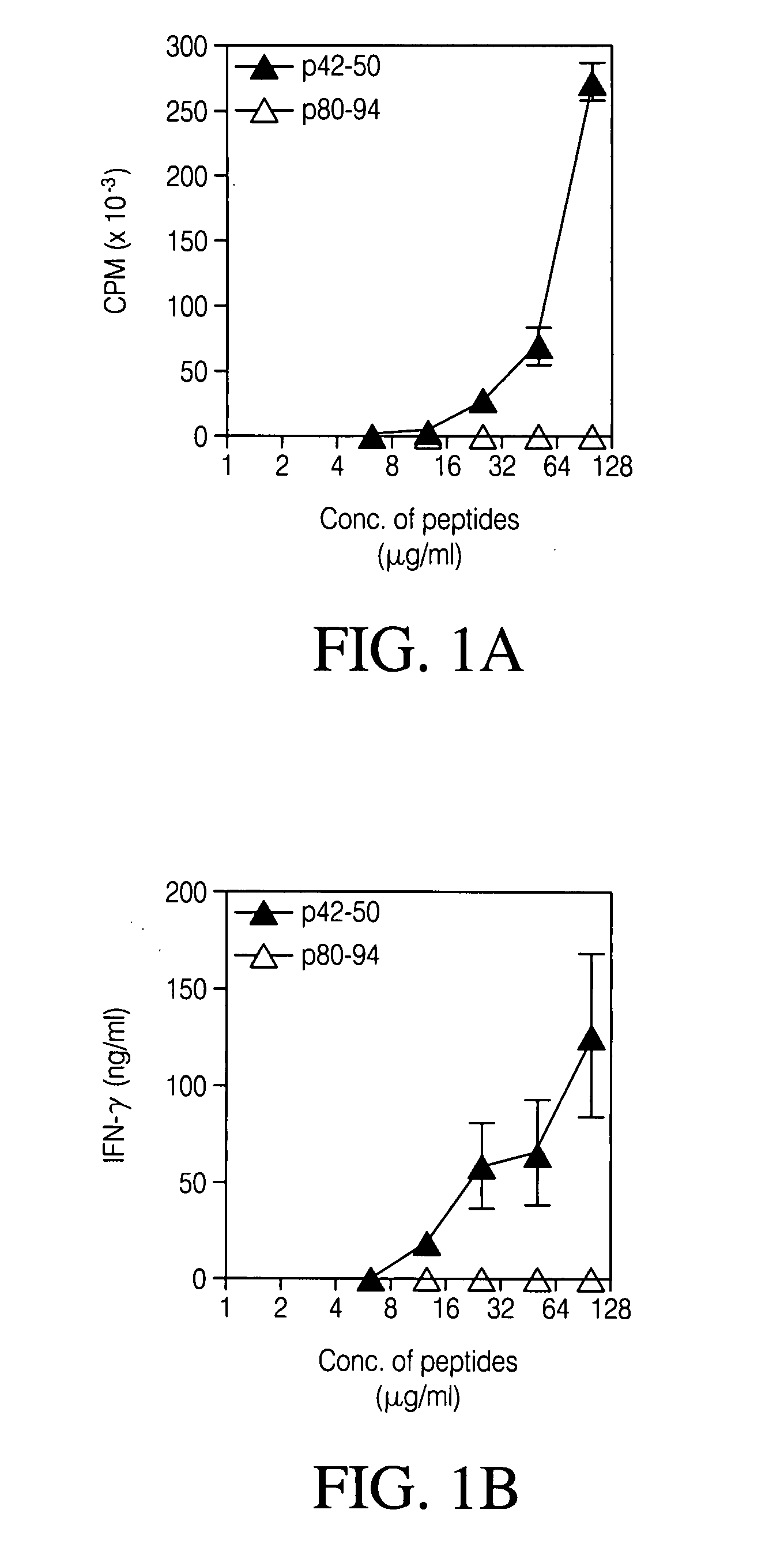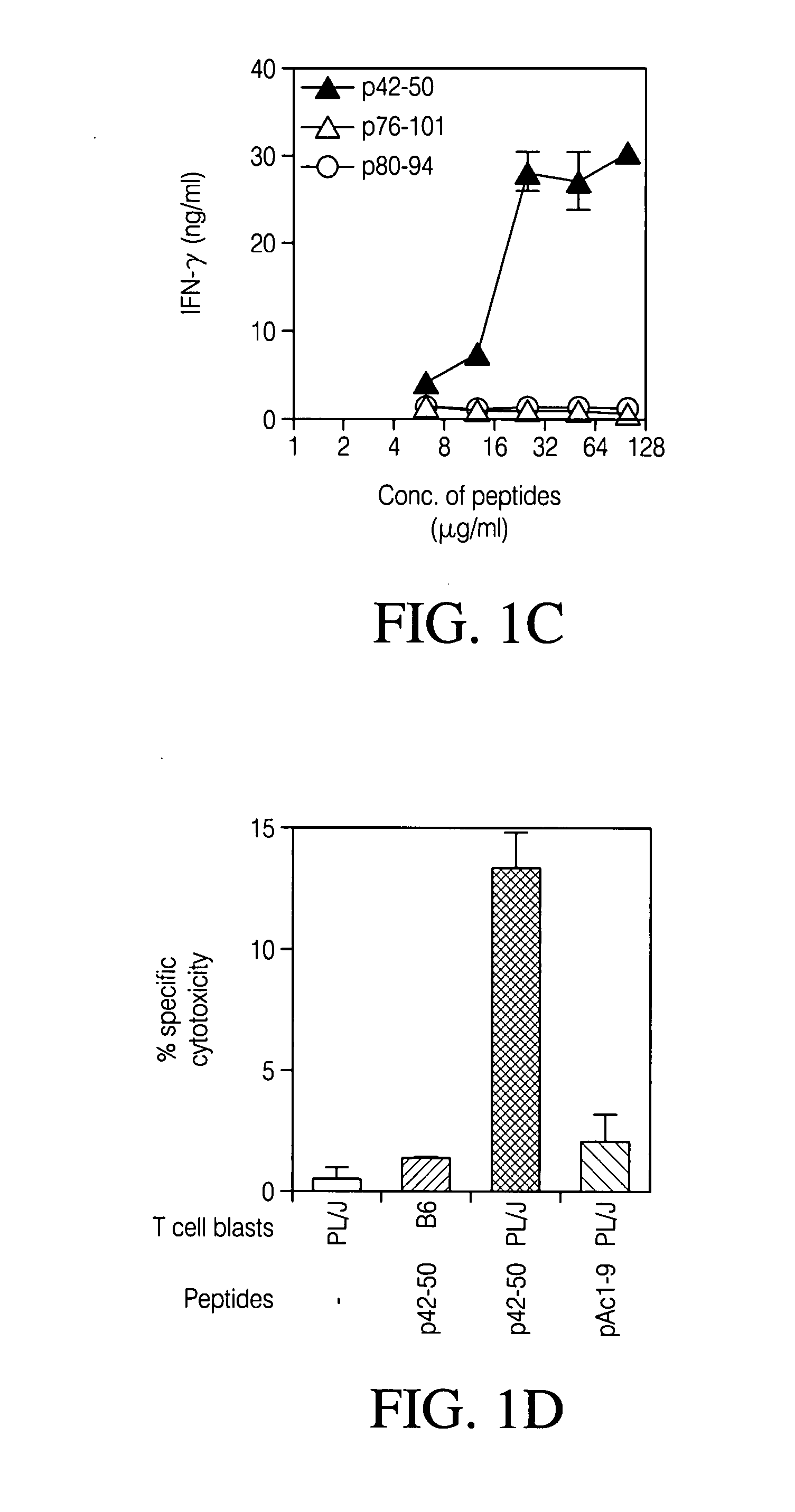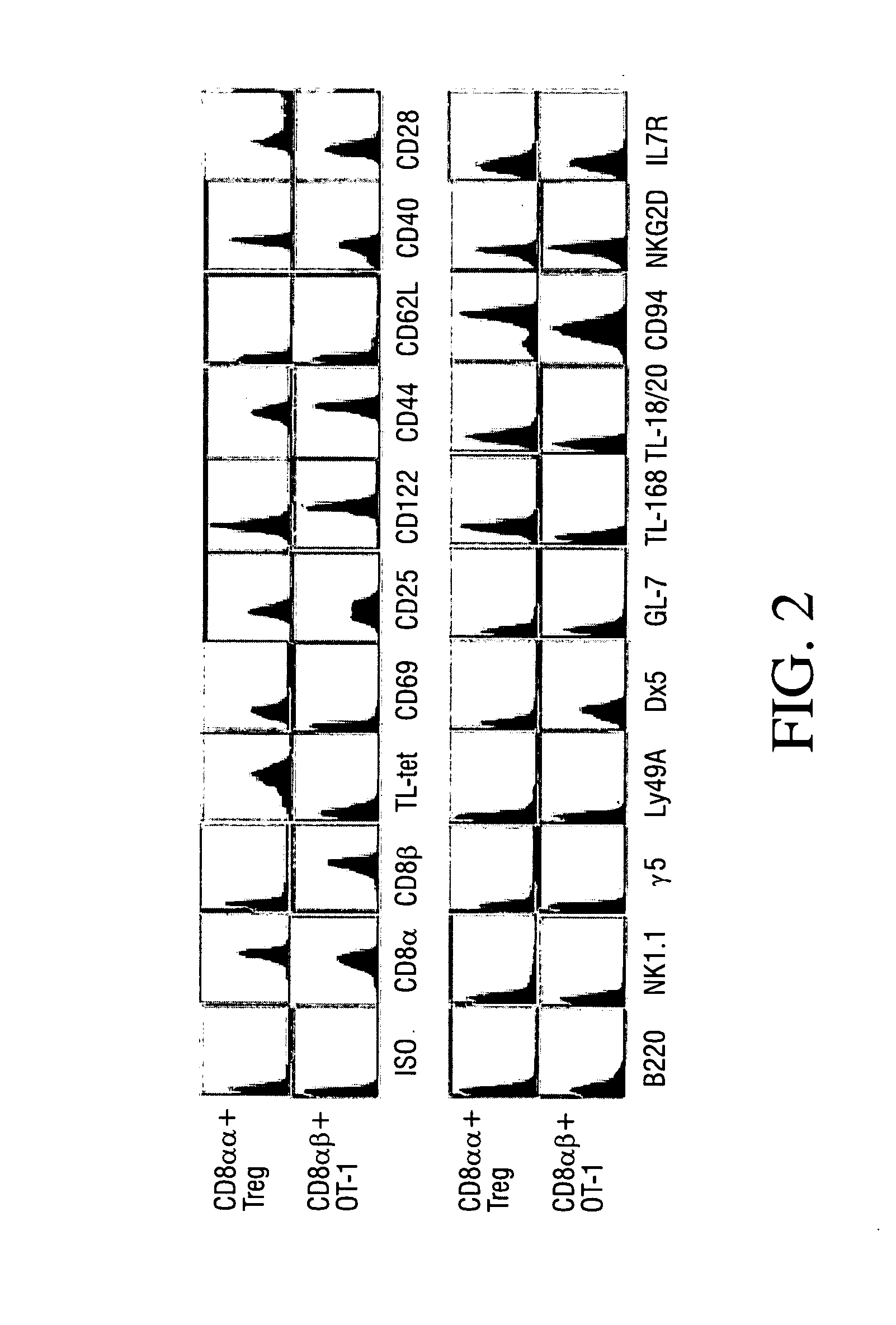Treatment of autoimmune disorders
a technology for autoimmune diseases and disorders, applied in the field of treatment and prevention of autoimmune or immune related diseases or disorders, can solve the problems of many autoimmune diseases evading treatment, affecting the lifespan and quality of life, and affecting the quality of life, so as to prevent, treat, or delay the onset of symptoms.
- Summary
- Abstract
- Description
- Claims
- Application Information
AI Technical Summary
Benefits of technology
Problems solved by technology
Method used
Image
Examples
example 1
Antigen Specificity of the CD8 Treg Lines and Clones
[0083] To examine antigen specificity, the CD8 Treg lines and clones, peptide p42-50-reactive CD8 T cell lines and clones were generated by limiting dilution from lymph node cells of PL / J mice s.c immunized with p42-50 peptide (20 μg / mouse). Proliferative (FIG. 1a) and cytokine response (FIG. 1b) of representative CD8 T cell clone, 2D11 and a CD 8 T cell line (line #2) (FIG. 1c) are shown in FIG. 1. CD8 T cells (50,000) were incubated with p42-50 or control peptide p80-94 at titrated concentrations in the presence of 500,000 irradiated syngenic APCs. Thymidine incorporation was assayed following in vitro culture for 72 hr. Cytokine secretion was determined by the standard sandwich ELISA in supernatants from a 48 hr culture. (FIG. 1d) Specific cytotoxicity of the 2D11 CD8 T cell clone towards p42-50-pulsed targets was also recorded. 51Chromium-labeled blasts (10,000) from the syngenic PL / J or C57BL / 6 mice pulsed with 10 μg / ml of p4...
example 2
Phenotypic Analysis of a CD8 Treg Clone
[0085] To determine whether CD8 Treg express characteristic cell-surface markers, a panel of mAbs was used to stain 2D11. Staining was analyzed by flow cytometry. In parallel, a conventional CD8 T cell clone (OT-1) specific for a peptide of ovalbumin (SINFEKL) and propagated under equivalent conditions was used as a control. CD8 Treg clone 2D11 and an irrelevant CD8 T cell clone were stained with the antibodies indicated in FIG. 2 (ISO, CD8a, CD8β, TL-tet, CD69, CD25, CD122, CD44, CD62L, CD40, CD28, B220, NK1.1, γδ, LY49A, Dx5, GL-7, TL-16B, TL-18 / 20, CD94, NKG2D and IL7R). Staining was analyzed by flow cytometry. These data are representative of three independent experiments.
[0086] As shown in FIG. 2, both clones express CD25 (IL-2Rac chain), CD122 (IL-2Rβ chain), and IL-7R, suggesting an activated / memory phenotype. The CD8 Treg maintained low-level expression of CD69 even after a prolonged resting period in vitro in the absence of exogenous...
example 3
CD8 Treg Clone 2D11 Secretes Tc-1-Like Cytokines and Kills Activated Vβ8.2+ CD4+ T Cells
[0089] The cytokine secretion profile of 2D11 as well as an OT-1 ovalbumin-reactive CD8 clone (control) was examined in cell cultures after stimulation with peptide-pulsed APC. As shown in FIG. 3a, 2D11 secreted IFN-γ and TNF-α (Tc1-like), but no detectable level of IL-2, IL-4, IL-5, IL-10, IL-12, and IL-13. A very low level of IL-6 secretion was detected. In contrast, the OT-1 clone secreted IFN-γ, TNF-α, IL-2, IL-5, IL-10, and IL-13. The Tc1 phenotype of the Treg clone was not an artifact of long-term culture because short-term p42-50-reactive T cell lines also secreted IFN-y, but not Tc2-like cytokines (Data not shown).
[0090] CD8 T cell-dependent depletion of activated, but not resting Vβ8.2+ CD4 T cells following induction of regulation has been shown in vivo. To determine whether CD8 Treg clones could specifically kill Vβ8.2+ CD4 T cells, an MBPAc1-9-reactive pathogenic Vβ8.2+ T cell clone...
PUM
| Property | Measurement | Unit |
|---|---|---|
| concentrations | aaaaa | aaaaa |
| state of equilibrium | aaaaa | aaaaa |
| purity | aaaaa | aaaaa |
Abstract
Description
Claims
Application Information
 Login to View More
Login to View More - R&D
- Intellectual Property
- Life Sciences
- Materials
- Tech Scout
- Unparalleled Data Quality
- Higher Quality Content
- 60% Fewer Hallucinations
Browse by: Latest US Patents, China's latest patents, Technical Efficacy Thesaurus, Application Domain, Technology Topic, Popular Technical Reports.
© 2025 PatSnap. All rights reserved.Legal|Privacy policy|Modern Slavery Act Transparency Statement|Sitemap|About US| Contact US: help@patsnap.com



